-
History & Society
- Education in Pre-war Hong Kong
- History of Taikoo Sugar Refinery
- Hong Kong Products Exhibition
- Local Festivals Around the Year
- Post-war Industries
- Pre-war Industry
- The Hong Kong Jockey Club Archives
- Tin Hau Festival
- Memories We Share: Hong Kong in the 1960s and 1970s
- History in Miniature: The 150th Anniversary of Stamp Issuance in Hong Kong
- A Partnership with the People: KAAA and Post-war Agricultural Hong Kong
- The Oral Legacies (I) - Intangible Cultural Heritage of Hong Kong
- Hong Kong Currency
- Hong Kong, Benevolent City: Tung Wah and the Growth of Chinese Communities
- The Oral Legacies Series II: the Representative List of the Intangible Cultural Heritage of Hong Kong
- Braving the Storm: Hong Kong under Japanese Occupation
- A Century of Fashion: Hong Kong Cheongsam Story
Geography & EnvironmentArt & Culture- Calendar Posters of Kwan Wai-nung
- Festival of Hong Kong
- Ho Sau: Poetic Photography of Daily Life
- Hong Kong Cemetery
- Sketches by Kong Kai-ming
- The Culture of Bamboo Scaffolding
- The Legend of Silk and Wood: A Hong Kong Qin Story
- Journeys of Leung Ping Kwan
- From Soya Bean Milk To Pu'er Tea
- Applauding Hong Kong Pop Legend: Roman Tam
- 他 FASHION 傳奇 EDDIE LAU 她 IMAGE 百變 劉培基
- A Eulogy of Hong Kong Landscape in Painting: The Art of Huang Bore
- Imprint of the Heart: Artistic Journey of Huang Xinbo
- Porcelain and Painting
- A Voice for the Ages, a Master of his Art – A Tribute to Lam Kar Sing
- Memories of Renowned Lyricist: Richard Lam Chun Keung's Manuscripts
- Seal Carving in Lingnan
- Literary Giant - Jin Yong and Louis Cha
Communication & Media- Hong Kong Historical Postcards
- Shaw Brothers’ Movies
- Transcending Space and Time – Early Cinematic Experience of Hong Kong
- Remembrance of the Avant-Garde: Archival Camera Collection
- Down Memory Lane: Movie Theatres of the Olden Days
- 90 Years of Public Service Broadcasting in Hong Kong
- Multifarious Arrays of Weaponry in Hong Kong Cinema
-
History & SocietyGeography & EnvironmentArt & Culture
-
View Oral History RecordsFeatured StoriesAbout Hong Kong Voices
-
Hong Kong Memory
- Collection
- All Items
- Oral History
Recently VisitedOral History
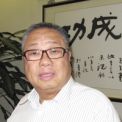
- Hong Kong delegates in international textile quota conferences
"Between the 1970s and 1980s, the Hong Kong government had sent delegates to sit in different international business conferences and negotiate with the European Union and USA on textile quotas. The delegates were headed by Deputy Director-General of Commerce and Industry Department, who was Chief Negotiator. In those years Director-General of Commerce and Industry Department was a senior official of the same rank as today’s department secretaries. Commerce and Industry Department answered to the three Secretaries of the Hong Kong government. Both the director and deputy-director posts were taken up by westerners. WK Chan was most impressed by Lawrence William Robert as a leader of the delegates. Lawrence William Robert was Chairman of TDC afterwards. WK Chan regarded Commerce and Industry Department as a cradle of senior officials. Many political stars were once deputy-directors of Commerce and Industry Department, for example, Donald Tsang, Regina Ip, John Tsang, Michael Sze and Chan Cho Chak. When Commerce and Industry Department went for negotiations, members of Textile Advisory Board (TAB) were also invited to the meetings to provide immediate advice. TAB members were appointed by the government. They came from both the industrial and commercial sectors as the quotas were allotted to trading companies and textile factories in equal halves. One of the more famous members of the commercial field was Lydia Selina Dunn, representative of the Swire Group. She later held office in Legislative Council and Executive Council. She even became a member of House of Lords, thanks to Mrs Thatcher, Prime Minister of the United Kingdom. Early TAB members representing the industrial field included YL Yang, Jack Tang, Henry Tang, SKChan, WK Chan, Francis Tien, James Tien, Christopher Cheng, John Chow, Lam Kan Shing, Kenneth Fang, William Fung, Frank Lin, Willy Lin, Andrew Leung, Stephen Cheong, Eleanor Wong and others. TAB was the first consultant body of Hong Kong’s industrial field. It had exerted a huge influence on government policies between the 1960s and 1970s. Quite a number of the then TAB members were now influential figures. WK Chan once represented the Macau government in quota conferences in the early period. The Macau delegates comprised of Susana Chou, Francis Tam, Sammy Liu, Victor Ng and others. They were now the upper class of Macau. Some of the representatives of Macau’s industries were recommended by trade unions while some were appointed by the government.
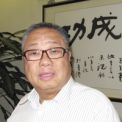
- Role played by Hong Kong representatives in international textile quota conferences
Textile quota conferences were convened by Asian export countries and European/US import countries. Official were sent for negotiations by different governments. Manufacturers from the export countries stood by to give advice. The negotiations were held between countries. The Hong Kong delegates played a leading role among the Asian countries. Many Hong Kong manufacturers had plants in Macau, Singapore, Malaysia, Thailand and other places. Their representatives of the textile industry were mostly Hong Kong manufacturers. The quota conferences were in one way a meeting of Hong Kong’s textile families. WK Chan exalted colonial Hong Kong’s senior officials as outstanding negotiators. Examples included Tony Miller, Chan Cho Chak, Chau Tak Hay, Donald Tsang, Yue Chung Yee, Regina Ip. The Hong Kong government stuck to Bilateral Negotiation principles and demanded the USA comply to the GATT rather than bullying the Asian countries with her power, or else she should resign from GATT. Hong Kong’s senior officials made themselves equal to the US part. They once successfully turned down a request from US companies to inspect the factories in Hong Kong. The manufacturers acted as consultants during the negotiations. Many Hong Kong manufacturers had plants outside Hong Kong and were a good source of information for the government. WK Chan had high praise on the open-mindedness of Hong Kong officials. They followed the mainstream when collecting opinions and so managed to execute the final plan. In retrospect of the rise of Hong Kong’s textile industry after the WWII, WK Chan deemed the key factor to be the Chinese political turmoil. It caused an influx of capitals, skills and labours into Hong Kong, which formed the foundation of Hong Kong’s prosperity when circumstances arose.
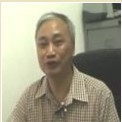
- Customers of Tai Hing Knitting Factories, Upstairs home garment factories in Sham Shui Po, Squat...
Tai Hing Knitting Factory's major customers were garment factories of two categories: production for local demand and production for export. Squatter garment factories in Sham Shui Po and Cheung Sha Wan were mostly manufacturers for local demand. Rather than producing on demand, these factories made garments and waited for fashion retailers to pick and purchase the finished products. The retailers were usually the boutique operators at shopping malls and did not have their own production line. To replenish best selling fashion items that ran out of stock, retailers would sometimes visit garment factories in person, waited by the side of the garment workers and pick the products as soon as they were finished. As local garment factories produced goods before selling them, they had to bear the risk of losing money if the products did not attract attention. For this reason, most local garment factory owners had a good eye for fashions that could sell. Alternatively, such owners would only produce a small quantity first and test it out in the market. If sales were good, garment factories would be attracted to place orders. Some squatter garment factories also handled garments servicing orders from European and American customers placed through trading companies. In those years, small local and export garment factories tended to concentrate in particular districts. The majority were later relocated to the mainland. Those still having local production were spread to Tsuen Wan, Kwai Chung, Kwun Tong and other districts.
In the 1980s, Nam Cheong Street and Yu Chau Street had high concentrations of squatter garment factories. Many manufacturers set up their factories upstairs in residential buildings resulting that sewing workshops were spread on different floors. A typical squatter factory consisted of a team of husband and wife working at home with a few workers and several sewing machines including overlocker types. All garments produced were then placed in the same premises waiting for wholesaling. Operators of retail stores knew the address of these upstairs workshops and would go there to select and buy goods from there directly. Between the 1980s and 90s, wholesale fashion factories were Tai Hing's major customers, accounting for around one third of its knitting factory’s turnover.
Since China’s economic reform and the adoption of open policy, these upstairs factories had moved their production to the mainland. The 1980s were booming years for Hong Kong’s garment industry. During this period of time, squatter factories which had already relocated to the mainland set up outlets in Hong Kong to display their samples in the ground floor shops on Cheung Sha Wan Road and Castle Peak Road in Lai Chi Kok. They also established offices at the back of their shops to make it quicker and easier for customers to place orders. After the squatter factory outlets moved to street-level shops, their customers were no longer limited to local buyers. Buyers from Africa and Southeast Asia also came to select goods and place orders. These street-level outlets were a convenient trading ground where buyers could find garment manufacturers and instantly select goods and place orders. A ground floor shop also made the mainland manufacturers look more reliable by enabling customers to keep in contact with them in Hong Kong after placing orders. Rents for street-level shops were expensive, with large shops often attracting tenants who were willing to pay over $100,000 a month. As a result, they only engaged in export wholesaling and not garment retailing.
The early 1990s were good years for Hong Kong’s knitting industry. Having studied foreign magazines to learn about popular fabric types, Au Kwan Cheung began to develop stretchable fabrics, send small quantities of these cloths to dyeing factories for dyeing and finishing and then market them to fashion garment factories. New fabric types were mainly promoted to the local market. Fashions made with new fabric materials could be sold immediately at street-level outlets on Cheung Sha Wan Road in Sham Shui Po. Such a practice enabled the quick testing of market responses. If marketing was carried out overseas, there was no such convenience for a local manufacturer like Au Kwan Cheung to test out his research outcome.
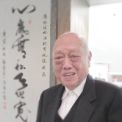
- Review on History of Hong Kong Garment History: Origins and Developments in Post-WWII period, Iss...
Hong Kong' s garment manufacturing industry started off soon after the war ended. In those days, there were abundant skilled sewers in Hong Kong. Manufacturers put great emphasis on credit and quality. There were also sound financial, communication and transportation systems in support. Meanwhile, industries in the neighbouring Asian countries had not yet started and thus had not become Hong Kong’s rivals yet. All of the above were factors for the rise of the garment manufacturing industry. In the 1950s, garments made in Hong Kong were mainly exported to British colonies in Africa. They were subsequently exported to Britain, the USA and Germany directly, marking the bloom of the garment manufacturing industry. In the early 1970s, the USA imposed the quota system on Hong Kong-made garments. At first, the Hong Kong Government then distributed all the quotas among the foreign trading companies, which threw Chinese manufacturers into a plight. SK Chan, then Chairman of the Garment Manufacturing Group under Federation of Hong Kong Industries, alongside other representatives of the industry including Chow Chung Kai and Lam Kan-shing, individually tried to persuade government officials and legislative councilors with every reason. The final outcome was the even distribution of quotas between foreign trading companies and Chinese manufacturers. SK Chan’s meetings with the upper management of Federation of Hong Kong Industries were normally conducted in English, as most attendants were Western businessmen. This was a big problem for the Chinese manufacturers. SK Chan then demanded that the meetings be conducted in Cantonese, and succeeded in winning the Western businessmen over to the demand of the Chinese manufacturers. Now SK Chan was still taking delight in talking about this. The garment manufacturers, having gained half the quotas, distributed the quotas among themselves according to production volume. They were also eligible to re-sell quotas to those manufacturers who had received no quota at all. SK Chan thought that with half the quotas on hand, the manufacturers’ bargaining power was lifted, and foreign trading companies could no longer offer sky-high prices. Local garment manufacturing factories thus had larger space for survival, facilitating the boom of Hong Kong’s garment manufacturing industry. The late 1970s was the heyday of Hong Kong’s garment manufacturing industry. Workers employed by garment manufacturers accounted for 40% of the labour force in the manufacturing industry. The gross export value of locally made garments amounted to 40% of that of all products made in Hong Kong. As the USA imposed the quota system, quite a number of Hong Kong manufacturers moved their factories to countries in South East Asia and South Asia, taking advantage of the absence of quota restrictions over there. However, Hong Kong manufacturers had always to adapt to the different policies and cultures existing in other countries when running their factories. The 1980s was a period in which local wages surged and the mainland opened her door for foreign investments. Many Hong Kong manufacturers moved their factories to the mainland, resulting in a gradual shrinkage of local garment production, which now has almost vanished. In recent years, the conditions for factory operation have been worsening. The government there has enacted the minimum wage law. Workers who received lower wages had to be given a pay rise. Seeing pay rises given to lower-paid worker, skilled workers naturally demanded the same treatment from the factory. As a result, labour cost has surged. SK Chan lamented that wage problems devastated the Hong Kong manufacturers. What’s more, SK Chan always complied with the law when running his factories on the mainland. Foreign companies with big brand names put great emphasis on human rights, and would send inspectors to the factories from time to time. YGM Manufacturing paid its workers for any overtime work performed as required by law, unlike some of its mainland counterparts who embezzled wages. The cost of running factories on the mainland for Hong Kong manufacturers kept rising every year, and foreign clients might not accept any increase in price, and so SK Chan thought that Hong Kong manufacturers’ future on the mainland was dim.
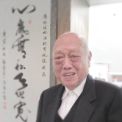
- The rise of Hong Kong Garment Industry in Post-WWII Period (1): Brands of ships, Markets of Export
Small-scale garment manufacturing factories were scarce in pre-war Hong Kong. Those hiring more than 30 workers were already regarded as big factories. Garments were mainly for supplied to the local market. In pre-war period, western-style shirts were unpopular among Chinese. They were used to go to a tailor who made Tang suits. Hong Kong’s manufacturing industry sprang up in the early post-war years. Shirts were the major product. Famous labels included Leaf and Crocodile. The garment manufacturing factories gathered up in the streets around Castle Peak Road in Cheung Sha Wan as both workers and cloth factories were abundant there. In the 1950s, the bigger companies included Kwong Hing Tai, Kwong Lung Tai and Crocodile. In the late 1950s, local garments were mainly supplied to British colonies in Africa. Hong Kong companies exported their goods via foreign trading companies. They then expanded into the US and European markets, and exports were ever growing in scale. S.K. Chan founded Yangtzekiang Garment Mfrs in 1949. He rented a site on Castle Peak Road to produce mainly shirts. He even established the DOCTOR brand. More expensive products made of cotton were exported to Singapore, Malaysia and Thailand, while cheaper goods made of chemical fiber were exported to Africa.
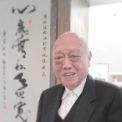
- The rise of Hong Kong Garment Industry in Post-WWII Period (2): Key Manufacturers, Mainstream Pro...
In the early post-war period, major garment manufacturing companies in Hong Kong included Lai Sun Garment, TAL, Lo’s Mee Kwong Garment, Bossini, Johnson Garment, Wing Tai Garment, Kwong Hing Tai and Kwong Loong Tai. Johnson Garment was run by the Wangs family. Its primarily business involved electrical machinery but it also made garments. Wing Tai was run by the Chengs family, whose business has changed to real estate. In those years, people like Kenneth Fang, Lam Kan-shing and Lim Por Yen were veterans in the garment manufacturing industry. A budding young talent was Charles Yeung. SK Chan regarded Kwong Hing Tai and Kwong Loong Tai as model factories, which were run by the Tse brothers. They established a single-block factory at Castle Peak Road around 1951. In its early years, YGM Manufacturing made cheap shirts to be exported to British colonies in Africa via an Indian trading company, but it lasted for only few years. After that, mid-range and high-end garments became its mainstream products. In the early 1950s, Kwong Hing Tai and Kwong Loong Tai made raincoats which monopolized the market. YGM dabbled in raincoat for a short period time but then gave up on it due to technical problems. YGM had always been making trousers. In the 1970s, denim jeans flourished and the company acting as an agent for Wrangler, an American brand. But due to different production equipment required by the production of the two kinds of garments, YGM did not go into massive production of jeans. It focused on just the trading of jeans. Now YGM produces pants including trousers, casual pants and sweatpants.
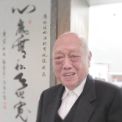
- The Four Stages of Development of Post-War Hong Kong Garment Industry
SK Chan thought that the garment industry in post-war times falls in four stages: (1) Export to British colonies. (2) Export to Europe and the USA. (3) Setting up factories in undeveloped Asian countries. (4) Setting up factories on the mainland. In the 1950s, Hong Kong products were mainly exported to nations of the Commonwealth (Britain, Southeast Asia and Africa), and the majority of them were cheap garments. In the 1960s, Hong Kong garments began their journey to Europe and the USA, of which the USA were the biggest market. Those garments exported to the USA were more varied in terms of types and grades. The gross export value for the USA also far exceeded that for the Commonwealth. The bloom of the garment manufacturing industry set in. In the 1970s, the US government imposed quota restrictions on emerging exporters such as Hong Kong for the sake of her local industries. At the beginning such restrictions applied only to garments made of cotton, later it extended to polyester and chemical fabrics. When the Hong Kong government was in negotiations with the US government about the quota on polyester garments, SK Chan was a consultant of the Textile Advisory Board. He and another dozen local garment manufacturers, who were members of the Board, attended meetings in the USA alongside some high officials of the then Hong Kong government such as Jack Cater. Only the government officials could attend the meetings. SK Chan and other manufacturers waited for news in a hotel. The officials informed them of the results of the meeting of the day, and then sought their opinions. In that year, the Japanese representatives surrendered to the US government. With the situation taking a sudden turn to the worse, the officials of the then Hong Kong government woke up all the manufacturers at the dead hour of 4 am to convene an emergency meeting. It turned out at last the Hong Kong party submitted themselves to the quota arrangements of the USA. After the implementation of the US quotas, Hong Kong manufacturers set up factories in Southeast and South Asian countries unrestricted by quota, taking advantage of the ample yet cheap labours and lands there at the same time. For instance, YGM had factories in Sri Lanka, Burma, Cambodia and Bangladesh. SK Chan thought that the government had provided little support to Hong Kong manufacturers setting up factories outside Hong Kong. For the most part, the companies sent their own men out for on-site inspection. After an appropriate site was located, the management would be stationed.
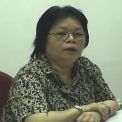
- Garment factories in Hong Kong: those produced for ”export” and those produced for local market
In Hong Kong, garment factories could be categorized in two types: those produced for ”export” and those produced for local market. The export factories were more formal, they usually operated with a license and strictly observed local labour laws and fire prevention regulations. The quality of the garments made for export complied with clients’ requirements closely. A QC (Quality Control inspector) would examine the products to ensure that they met the size specifications. Garments of exquisite handcraft generally passed the inspection even if they did not exactly meet the size specifications. Most garment factories which manufacture ‘local’ goods were home factories run in old tenement houses. Most workshops operated in a premise of 1000 sq. ft. with 10 sewing machines, carrying out simple pressing and cutting tasks. A home factory had only 10 workers with unclear division of tasks. Many factories which produced goods for local sale operated on Prince Edward Road. They manufactured suits and one-piece. In those days, the local sales were good because the economy was good in Hong Kong. There was a great demand for local cutting masters because they were all very skillful. Most masters preferred to work in the home factories because they enjoyed much autonomy in the sizing of cut-and-sewn garment. The first home garment factory To Sui Wan worked for occupied two storeys of a building. The cutting workshop was set up on the rooftop, and sewing and pressing workshops were on the 3rd floor. The sewing machine operators were responsible for manufacturing all parts of the garment. The blindstitching and button attaching were done by hand. After pressing, the products would be ready for delivery. The home factory would first design the apparel, and then make the samples and do the promotion. A home factory usually would not keep any goods in stock and produce when an order was received. It also consigned goods for sale. The proprietor of a home factory must keep abreast of the trends. If the factory could supply popular products, it would receive orders more than it could handle, especially during change of season. Foreach design, a home factory might receive orders ranging from several dozens to several hundred. To maximize revenue, the cutting room had to know how to make the most of the fabric. Sometimes, the factory received no order during off seasons, so it might have no income for one or two months. When this happened, the male workers would leave for the export factories. When To Sui Wan first joined the trade, she did blindstitiching and overlocking. Because she had learnt the pedal model sewing machine previously and had knitted for years, she had no difficulty with sewing garments. In the home factories, her workmates taught her all they knew and she was willing to learn modestly so she mastered a lot of skills in a very short time.
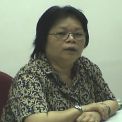
- Modes of departmentalization of local garment manufacturers
Local garment manufacturers adopted two modes of departmentalization: a fine mode and a broad mode. If a fine mode of departmentalization was adopted, the factory would be composed of 20 to 30 departments. If a broad mode was adopted, there were fewer departments and one worker might work for 2 to 3 departments (work steps). How fine the departmentalization was depended on how complicated a dress was made. Large-scale factories preferred fine departmentalization of tasks. To Sui Wan thought this mode was suitable for apprentices and new workers because these inexperienced workers could start with the most simple tasks. To Sui Wan preferred apprentices who had no previous knowledge about sewing so that she could teach them the most basics. She did not like those who had some initial knowledge but had developed some bad habits. Tat Lok Mei was composed of 8 to 10 departments and adopted the mode of broad division. Tat Lok Mei compartmentalized the tasks by the constituting parts of a clothes such as the sleeves, collar, lining, pressing, blindstitching and overlocking. The principle of the choice of the mode of departmentalization was profit. A good design of departmentalization enabled the most efficient production and motivated workers to work hard for better income The mode of departmentalization in Tat Lok Mei was different from an ordinary shirt manufacturer because Tat Lok Mei produced fashionable dresses, blouses, coats and trousers. Although the workers belonged to different departments, they must be able to produce the entire garment on his own. A new worker must learn different skills of sewing and know well every step of sewing a garment. In the sample department of Tat Lok Mei, there were several skilled workers and four sewing machines. A European client always complained Tat Lok Mei’s quotes were too high and they would ask for quotations from other factories for comparison. However, the client would eventually place orders with Tat Lok Mei because they had confidence in the quality of Tat Lok Mei’s product and they were willing to pay more. Hero’s departmentalization was based on the types of garment. In the factory, garment production and weaving were two different departments because they used different machines. The factory had no female supervisor to supervise and coordinate the making of a sample garment. A sewer must be able to produce the entire garment, including night gown and pajamas, knitwear, coat, skirt, swimming suits and sequin dresses. Hero had a rather big sample office with more than 10 skillful workers. After it was listed, it had more than 50 skillful workers and more than 70 sample makers.
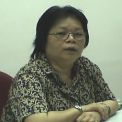
- The co-ordination role of an ''elder sister'' in Hong Kong garment industry
To Sui Wan was the ‘elder sister’ (Editor’s note: the trade jargon of female supervisor) in Tat Lok Mei. She was responsible for arranging overtime work and outsourcing tasks besides acting as a bridge between the factory manager and workers. In those days, workers only worked overtime when the deadline was tight. It was the factory manager who decided whether the workers should work overtime. To Sui Wan always worked extra night shifts when she worked in the woollen knitting factories. Sometimes, she had to work until 11 pm. When no overtime work was needed, she went with her workmates working in other factories to earn additional. Although overtime work brought additional income, the workers might not have the energy doing this. When she arranged overtime work with the factory manager, workers’ income was her top priority as she believed that the extra income would encourage workers to work harder. If they could complete the orders earlier than expected, then the revenue of the factory could be increased by taking more orders. Generally, when the local garment factories outsourced their jobs, the person in charge would deliberately lower the offer to win the employer’s trust. When she worked as a supervisor in Tat Lok Mei, on one occasion she miscalculated the wages and the outsource workers refused to work unless a raise was given. She strongly advised her employer to compensate workers for the wage differences so the order would not be delayed, the loss could be offset in other ways later. The wages of outsource jobs such as sewing and pressing were different. To Sui Wan said the wages were determined based on the experience. She must consider the interests of all parties concerned, that is, she had to secure the profit of the factory and at the same time offer reasonable wages for the workers. Sometimes, a supervisor might have to change the order of the production procedure to prevent the entire production flow from being affected due to the delay in one of the departments.
Copyright © 2012 Hong Kong Memory. All rights reserved.
| Set Name |





